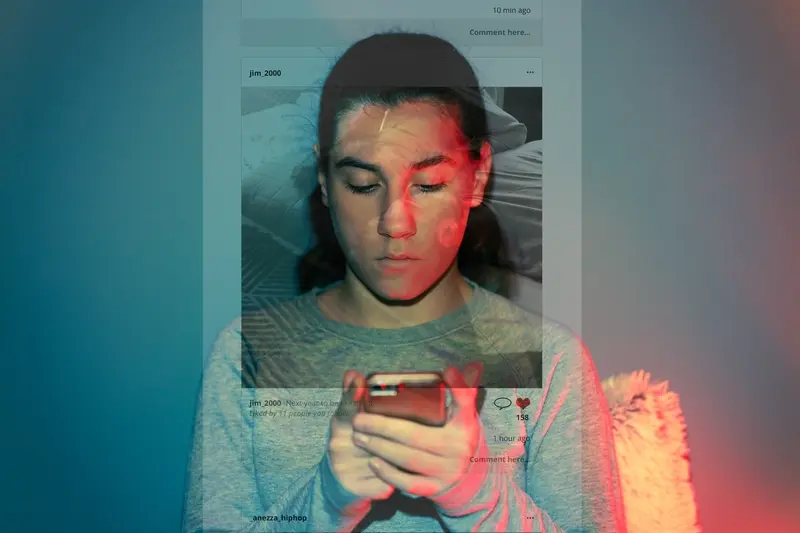How Do Social Media Apps Make Money?
Every single day, billions of people scroll through social media apps without paying a penny to use them. Yet companies like Facebook, Instagram, and TikTok are worth hundreds of billions of pounds. This creates a fascinating puzzle—how do free apps generate such massive profits? The answer lies in understanding the complex revenue models that power these platforms.
Most people assume social media companies make money from advertising alone, but that's only part of the story. These platforms have developed sophisticated systems that turn user engagement into multiple income streams. From data collection to premium subscriptions, the ways social media apps monetise their users have evolved far beyond simple banner ads.
The most successful social media platforms don't just sell advertising space—they sell access to precisely targeted audiences at exactly the right moment
Understanding these revenue models isn't just academic curiosity. If you're building a mobile app or thinking about platform economics, knowing how the biggest players generate income can inform your own strategy. This guide breaks down the various ways social media apps turn free users into profitable businesses, exploring everything from the obvious advertising revenue to the more subtle methods of monetisation that most users never notice.
The Big Picture: How Social Media Apps Actually Make Money
Right, let's get straight to the point—social media apps are massive money-making machines, and most people don't have a clue how they actually work. When I first started building apps, I thought these platforms were just nice places where people shared photos and chatted with friends. Boy, was I wrong!
The truth is, social media companies have figured out multiple ways to turn our scrolling habits into serious cash. They're not just running one business model—they're running several at the same time, which is pretty clever when you think about it.
The Main Money Makers
Most social media apps make their money through advertising (that's the big one), but they've also got subscription services, in-app purchases, and they're collecting data about us that has real value. Some platforms charge businesses for special features, whilst others have created premium versions that users pay for monthly.
What's interesting is how these different revenue streams work together. The free users generate data and content, which attracts advertisers, which pays for the whole thing to keep running. It's a bit like a complicated puzzle where every piece needs the others to work properly—remove one part and the whole system starts to wobble.
Advertising: The Cash Cow of Social Media Platforms
Let me be blunt—advertising is where the real money is made in social media apps. I've worked with enough clients over the years to know that when someone mentions mobile app revenue models, advertising is usually the first thing that comes to mind. And for good reason too; it's the backbone of most successful social platforms.
Here's how it works: social media apps collect massive amounts of user data (what you like, where you go, what you buy) and then sell access to advertisers who want to reach specific groups of people. Facebook doesn't charge you £5 a month because they're making far more than that from showing you targeted ads. The same goes for Instagram, TikTok, and pretty much every other major platform.
Why Advertising Works So Well
The beauty of this revenue model lies in its scalability. Once you've got the platform economics figured out—meaning you know exactly how much each user is worth to advertisers—you can focus on growing your user base. More users equals more valuable advertising space, which means higher prices for brands wanting to reach your audience.
The key to successful advertising revenue is understanding your user demographics inside and out. Advertisers pay premium prices for access to specific, well-defined audiences rather than general exposure.
Most social media apps use a combination of banner ads, sponsored posts, and video advertisements. The clever bit is making these ads feel natural within the user experience rather than intrusive pop-ups that annoy people.
Subscription Models: Getting Users to Pay Monthly
Getting people to pay monthly for a social media app is tough—really tough. Most users expect these platforms to be free, and convincing them to hand over their hard-earned cash every month requires something special. But when it works, subscriptions create steady, predictable income that makes investors very happy indeed.
The key is offering genuine value that free users can't get elsewhere. Think premium features, exclusive content, or removing those annoying adverts completely. Twitter Blue tried this approach with verification badges and advanced features, whilst Discord offers Nitro subscriptions for better video quality and custom emojis.
What Makes Users Subscribe
From my experience working with app developers, users will pay monthly subscriptions for:
- Ad-free browsing experiences
- Exclusive content from creators they love
- Advanced privacy and security features
- Premium customisation options
- Early access to new features
- Higher quality media uploads
The Challenge of Implementation
The tricky part is finding the right balance. Make the free version too limited and people won't stick around long enough to consider upgrading. Make it too generous and nobody sees the point in paying. Most successful apps start with a solid free experience, then gradually introduce premium tiers once they've built a loyal user base who genuinely value the platform.
In-App Purchases: Small Transactions That Add Up
You know those little notifications that pop up asking if you want to buy extra lives or special stickers? That's in-app purchases at work—and they're absolutely brilliant for social media apps. I've watched countless apps transform from struggling startups to profitable businesses just by getting their in-app purchase strategy right.
Most social media platforms offer digital goods that users can buy to enhance their experience. Think Instagram's paid story filters, TikTok's virtual gifts, or LinkedIn's premium messaging credits. These purchases might seem small—often just 99p or £2.99—but they add up quickly when millions of users are making them.
The Psychology Behind Small Purchases
What makes in-app purchases so effective is their low barrier to entry. Users don't think twice about spending £1 on a fun filter or emoji pack; it feels like pocket change. But when you multiply that by your user base, you're looking at serious revenue. I've seen apps generate thousands of pounds daily from these micro-transactions.
The beauty of in-app purchases is that they let users choose exactly what they want to pay for, creating a personalised revenue stream that feels natural rather than forced.
Social media apps have mastered the art of making these purchases feel worthwhile—whether it's unlocking premium features, buying virtual gifts for friends, or accessing exclusive content. It's a revenue model that keeps users engaged while generating steady income for the platform.
Data Collection: Why Your Information Has Value
Here's something that might surprise you—every time you use a social media app, you're actually paying for it. Not with money, but with your personal information. I know that sounds a bit dramatic, but it's true! Social media companies collect massive amounts of data about their users, and this information is worth billions.
Think about what happens when you scroll through your feed. The app tracks which posts you like, how long you watch videos, what you share, and even what you don't interact with. It knows your age, location, interests, and shopping habits. All of this creates a detailed profile of who you are and what you might buy.
What Data Gets Collected
- Your likes, comments, and shares
- How long you spend looking at different posts
- Your location and movement patterns
- What you search for and click on
- Your friends and connections
- Device information and usage patterns
Companies then sell this data to advertisers who want to show you products you're likely to buy. It's like having a crystal ball that tells them exactly what advert to show you! This data collection is so valuable that some social media platforms make more money from selling user information than they do from advertising.
Premium Features: Creating Different User Experiences
When I'm working with clients on their mobile app strategy, one question that comes up time and time again is how to balance free users with paying ones. Premium features offer a clever solution—they let social media apps give everyone a basic experience whilst charging for the extra bells and whistles.
Think about how this works in practice. Most social platforms give you the core functionality for free; you can post, comment, and connect with friends without paying a penny. But if you want special features, you'll need to open your wallet. LinkedIn does this brilliantly with their premium subscriptions that unlock advanced search filters and messaging capabilities for job seekers and recruiters.
Common Premium Feature Categories
- Enhanced profile customisation and verification badges
- Advanced analytics and insights for content creators
- Priority customer support and faster response times
- Increased storage limits or higher quality media uploads
- Ad-free browsing experiences
- Exclusive content access or early feature releases
The beauty of this revenue model lies in its flexibility. Users can choose exactly what they're willing to pay for, creating multiple revenue streams from different user segments. Content creators might pay for analytics tools, businesses for advanced targeting options, and casual users for removing adverts.
Start with a generous free tier to build your user base, then identify which features your most engaged users would gladly pay for—these are your premium goldmines.
Alternative Revenue Streams: Beyond the Obvious
I've spent years working with social media apps and I'm always amazed by how creative some platforms get with making money. Beyond the usual suspects—advertising, subscriptions, and in-app purchases—there are some clever revenue streams that many people don't even realise exist.
Take virtual gifts, for instance. You know when someone sends you a digital rose or a dancing panda on a live stream? Those cost real money. People spend millions buying these virtual items to show appreciation or grab attention. It's brilliant really—the app creates something that costs nothing to produce but has emotional value to users.
Creative Ways Apps Generate Revenue
- Virtual gifts and stickers during live streams
- Selling merchandise through integrated shops
- Offering verification badges for a fee
- Creating paid creator tools and analytics
- Running job boards and professional services
- Hosting paid events and workshops
Some platforms have turned themselves into mini marketplaces. They'll take a cut from every t-shirt sold or every concert ticket purchased through their app. Others charge creators for advanced tools—better analytics, scheduling features, or promotional boosts. It's like giving someone a free fishing rod but charging them for the fancy bait.
The smartest apps don't rely on just one revenue stream; they build multiple income sources that work together to create a sustainable business model. This is particularly important if you're considering launching a new social platform in today's competitive market.
Conclusion
After building mobile apps for over eight years, I've watched countless entrepreneurs get excited about creating the next big social media platform—only to completely forget about how they'll actually make money from it. The truth is, understanding these revenue models isn't just interesting background knowledge; it's the difference between building a successful app and burning through your savings.
The most successful social media platforms don't rely on just one income stream. Facebook makes billions from advertising but also generates revenue from data insights and premium business features. TikTok combines advertising with virtual gifts and brand partnerships. Instagram uses everything from sponsored posts to shopping integrations. Smart developers think about monetisation from day one, not as an afterthought.
What strikes me most is how platform economics have evolved. Ten years ago, most apps tried to charge users upfront—and most failed. Now the best mobile app revenue models are built around giving users value first, then finding ways to monetise that engagement. Whether that's through carefully targeted advertising, optional premium features, or enabling transactions between users, the money follows the value.
If you're planning your own social media app, don't pick just one revenue model. Think about how different streams can work together to create a sustainable business that actually serves your users well.
Share this
Subscribe To Our Learning Centre
You May Also Like
These Related Guides

Whats The Total Cost Of Owning An App Long Term?

What Are The Legal Requirements For Building Social Media Apps?



